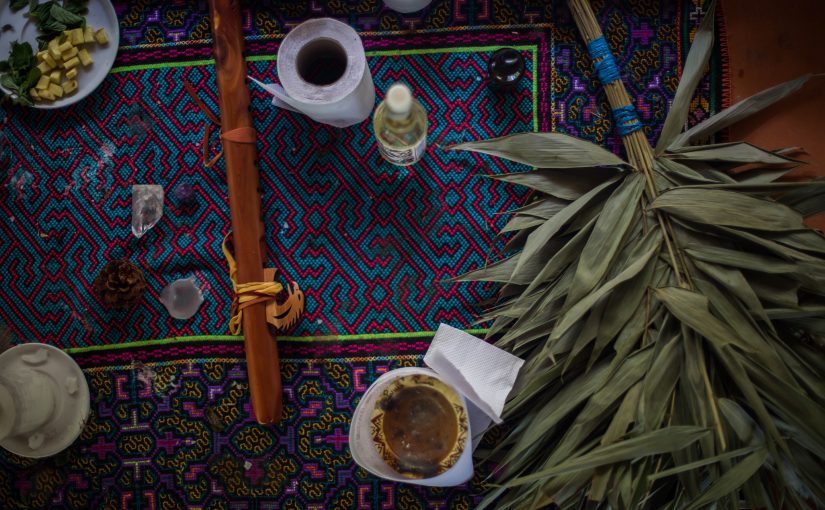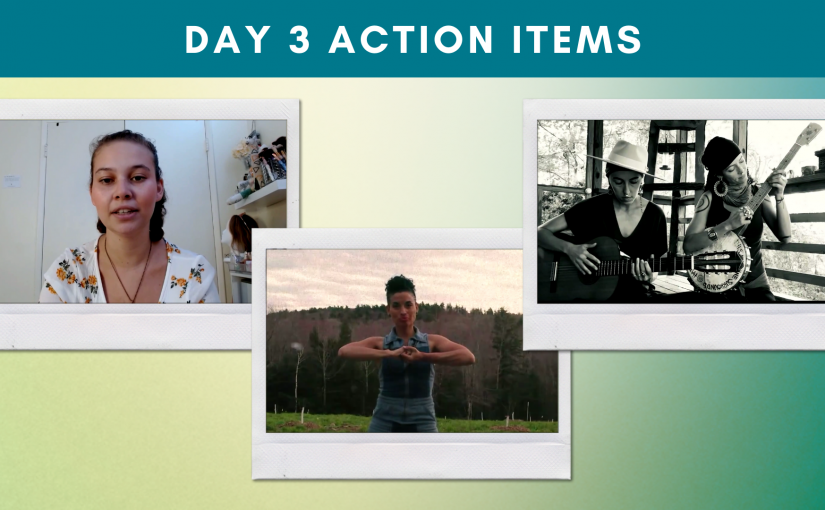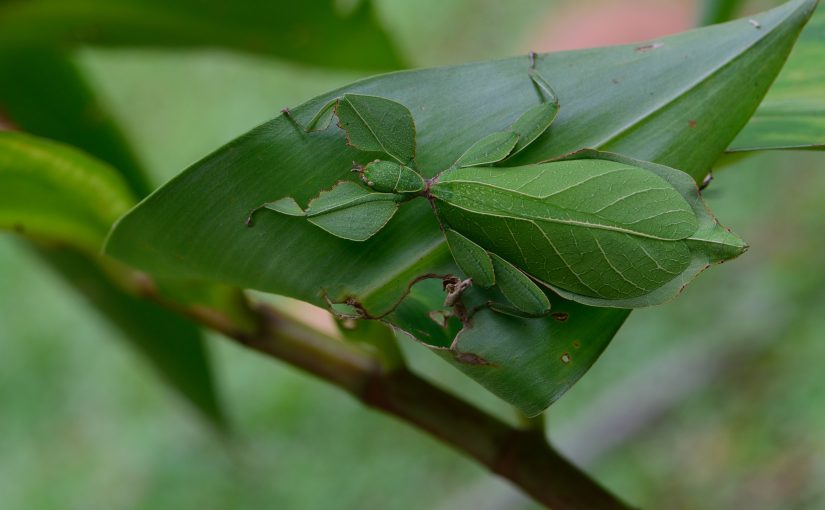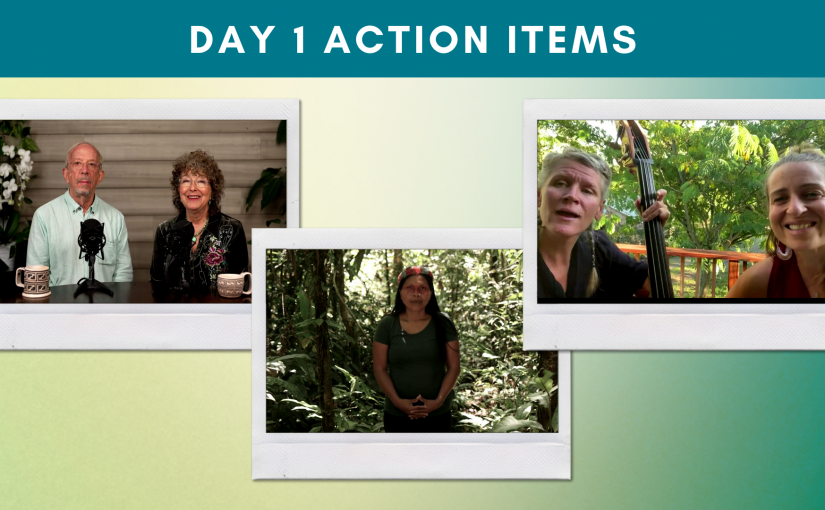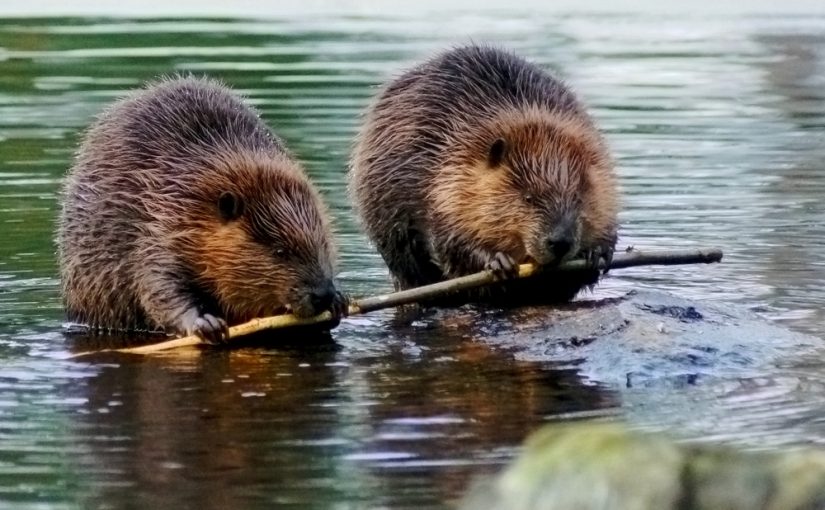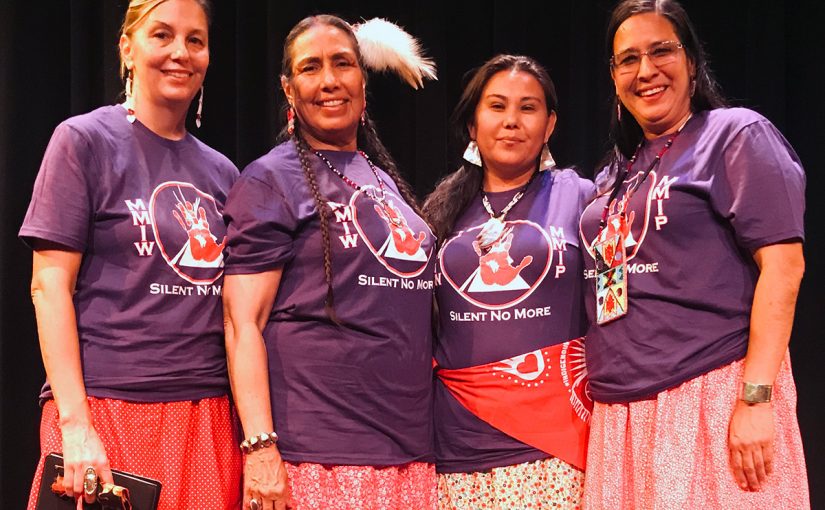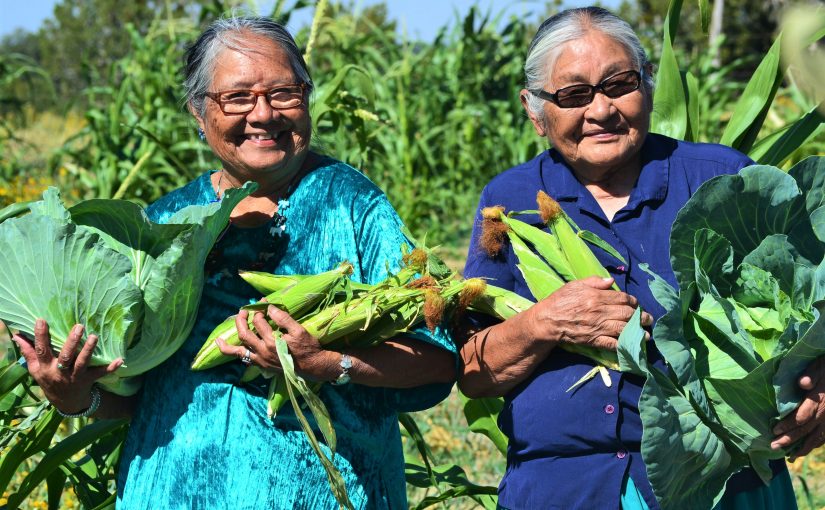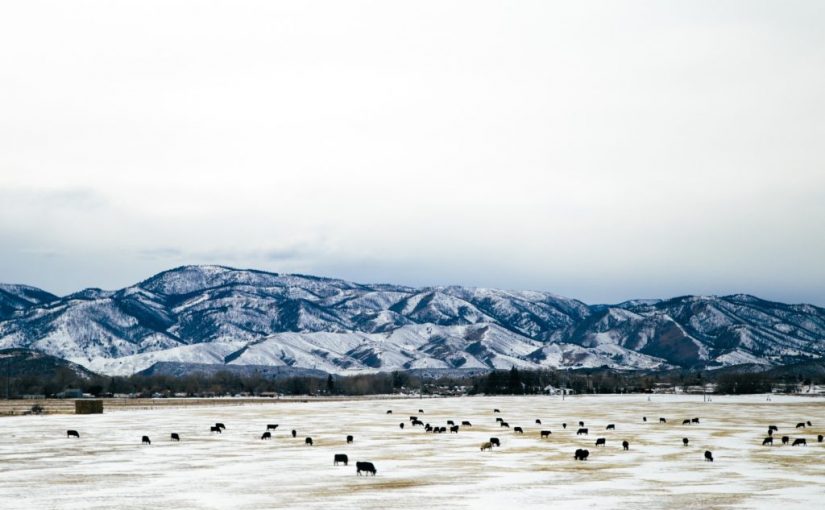The idea that a river or other natural feature is a living being, imbued with the right to live and thrive is nothing new to Indigenous Peoples around the world. In this episode with Matriarch Casey Camp-Horinek, we talk about how a burgeoning indigenous-led Rights of Nature movement has the potential to protect ecosystems from destruction by granting legal rights to nature itself, and how many tribes are uniquely positioned for leadership to institute and uphold the Rights of Nature because of their sovereign legal status.
To listen to the second part of this program, click here.
Casey Camp-Horinek, a tribal Councilwoman of the Ponca Tribe of Oklahoma and Hereditary Drumkeeper of its Womens’ Scalp Dance Society, Elder and Matriarch, is also an Emmy award winning actress, author, and an internationally renowned, longtime Native and Human Rights and Environmental Justice activist. She led efforts for the Ponca tribe to adopt a Rights of Nature Statute and pass a moratorium on fracking on its territory, and has traveled and spoken around the world.

Resources
Bioneers’ Indigeneity Program Rights of Nature Initiative
Rights of Nature Bioneers Media Hub
Casey Camp-Horinek: Aligning Human Law with Natural Law | 2019 Bioneers Conference Keynote Address
This is an episode of Indigeneity Conversations, a podcast series that features deep and engaging conversations with Native culture bearers, scholars, movement leaders, and non-Native allies on the most important issues and solutions in Indian Country. Bringing Indigenous voices to global conversations. Visit the Indigeneity Conversations homepage to learn more.
Credits
Executive Producer: Kenny Ausubel
Co-Hosts and Producers: Cara Romero and Alexis Bunten
Senior Producer: Stephanie Welch
Associate Producer and Program Engineer: Emily Harris
Consulting Producer: Teo Grossman
Studio Engineers: Brandon Pinard and Theo Badashi
Tech Support: Tyson Russell
Mer Young creates the series collage artwork.
Additional music provided by Nagamo.ca, connecting producers and content creators with Indigenous composers.
Transcript
CARA ROMERO: Hi, Everyone. Welcome to the Indigeneity Conversations, our native-to-native podcast dialogues from Bioneers. I’m Cara Romero, co-host and also co-director of the Bioneers Indigeneity Program alongside Alexis Bunten.
ALEXIS BUNTEN: Hey Everyone. Today we’re going to be speaking with Casey Camp-Horinek about her remarkable work in the tribal rights of nature movement. It was such a great conversation that we’ve made it into a two-episode podcast. This is part one.
Casey is a shero of ours and an incredibly powerful matriarch and elder. She’s a leader in the global, Indigenous led, Rights of Nature movement. Casey’s tribe, the Ponca Nation, was one of the first tribes to really adopt Rights of Nature law in the United States.
CR: In this conversation, you’ll hear from Casey about her personal history as well as our shared beliefs that rights of nature initiatives are important and protective of all peoples.
We also discuss our native led Rights of Nature initiative within the Bioneers’ Indigeneity Program. We’re working to support many tribes through the research and development of methodology that would assist councils, attorneys, and community organizers in self-determining how to adopt Rights of Nature into tribal governance.
So now let’s go to our conversation with Casey. We began by asking her about her life’s journey and path, and what brought her to the work she’s doing now.
CASEY CAMP-HORINEK: I want to back up just a bit and just genuinely say how good it makes me feel, sincerely, deeply that you are here and doing what you are doing, because as a matriarch, and you know my joke is about raising all of my young people after graduating from MIT – Matriarch in Training – my daughters, granddaughters, great-granddaughters, and you. And I feel really good about that. It’s an important part of our being.

As an elected official, as an ambassador for the Ponca tribe, my main role is being that – matriarch to a [inaudible] clan of people, of being a traditional drum keeper for the women’s society, the only existing women’s society of the Ponca Nation, and to have the honor of carrying on the ways of my women folks that have taught me how to move and to be flexible, to be resilient, to be inventive and to understand that our mother, the Earth, has consistently evolved in her needs and in her nurturing us, and to the needs of all that is, not just human life, but you as a part of nature, not separate from and that’s very important to internalize. We humans are nature.
And so to fast forward through my lifetime of being a young brown girl that lived in poverty and so rich in culture. We grew up being transplanted to various cities, part of the relocation process of the ‘50s. I was the youngest of six. And we transitioned through—I know I went through 12 different schools. We survived because we come from survivors. And we knew how to do it. We knew how, in the generations before us, how to adapt to the cold and to the heat, and to the hunger and to the plenty.
And so the same was true when we were workers in the San Joaquin Valley when I was a young girl. The same was true when we lived in Kansas City, when we lived in Washington state, when we transitioned from place to place when my parents were looking for work and we all worked together. And as an adult coming into the American Indian movement in my youth, and fulfilling that empty spot inside me that had been trained by what they used to call the dominant society – and I’m over that; I know who we are [LAUGHTER] so I no longer consider that foolish time when we tried to be the round peg fitting into their square, linear world. And the American Indian movement, which my brother, Carter Camp, was the leader in, had awakened something that the Native youth movement also had, in saying that we exist proudly, strongly, and we will pull all of the generations around us back into cultural wholeness by rejecting those things that were killing us spiritually, physically, mentally, and emotionally.
We didn’t even think of the word activist. We were only doing what was necessary as Ponca people. But Julie, our oldest, her first real chance was [SINGING – Que viva le , Que viva viva] And that came from after Wounded Knee joining with Cesar Chavez marching through the San Joaquin Valley, with Joan Baez leading us in that chant. Powerful time.
Fast forward again into this century, and being an elected official not because I really wanted to be in political office, but because it was necessary. When my people asked me, I’m bound to do it. It is part of our teachings. And so I went into office.
We passed within the first few months a moratorium on fracking and injection wells, because as sovereign people, we can demand that within our territory, and we did. And it still exists. A resolution against KXL coming through our territory
And during that period of time, I had been being educated about this underlying movement within this protection of our Mother Earth called Rights of Nature. Traveled to Ecuador, looked at their constitution, and several other events. And eventually, through that guidance that only the Great Mystery can guide you through, came up with this understanding of how we should be responsible to protect our generations and our people who are existing under environmental, genocidal onslaught by Conoco-Phillips, Phillips 66, and a myriad of other things, that if we enacted this statute – we wanted to get it into our constitution – and that’s coming up; we’ll talk more about that – that we could hold them responsible, not just in federal or state courts, which has been really a joke for Indigenous People, but in the court of the Ponca people. And it’s an interesting path to be going down. I’m very grateful for the guidance and for those who walk before me, and all of you who are leading this wonderful new way of looking at things.
So I’m thanking you for that question. And there’s nothing going to have a short answer.
CR: That was beautiful. Thank you, Casey. I just wanted to return the love and admiration for you sharing time with us today, speaking about such important issues. We’re all kindred spirits, and I think that that’s so important. All of our tribes can be so different, but where I find more and more we unite in our existence, in our struggles.
And this Rights of Nature movement has been such a profound area for me to learn about as a young Native woman. Bioneers has a long history working and educating Native and non-Native folks on Rights of Nature law. And our CEO and founder, Kenny Ausubel, in 2006 invited attorney Thom Linzey to the Bioneers main stage to give a keynote on Rights of Nature. And through these keynotes that Bioneers does, there’s always this daisy chain of events, and that really led to that amendment to the constitution down in Ecuador inserting Rights of Nature into law and governments in South America.
And it really got Alexis and I to be able to meet other Native people that, like us, learned about this through Bioneers and thought this might have really profound application in tribal governments.
I, like you, have served on tribal council as an elected official. It was something that I never thought I would find myself doing. It was something that I was asked to do by an elder when I was just 30 years old. And I’m so glad I did it. I learned more in that three years on tribal council than I feel that I had learned in my whole life. My background is as an artist, as an activist, and, like you, and very ontologically tied to my homeland and my lands of the Mojave Desert in California.
I think it’s no coincidence at all that our landscapes are something that we’re deeply connected, inseparable from, ontologically tied to, part of our spirituality. And so that we feel from birth and through our teachings that we are supposed to protect these pristine areas, and we have intricate understandings of our ecosystems. And I would say whether we’re in our ancestral homelands, I know that those ties can be very strong, but even if we’ve been removed to other areas, I feel like that blood memory comes through, that need to protect our landscape.
The other thing that I learned on tribal council was kind of pulling on what you were saying before, that this is really a square peg in a round hole. And our tribe, like many others, is—has adopted what’s called a 1934 IRA constitution [The Indian Reorganization Act]. And for our audience—for our audience, these tribal constitutions were boiler plate constitutions that were adopted in the years immediately following the Indian Reorganization Act of 1934. They were forced on us by the Bureau of Indian Affairs, also called the BIA, in order to garner our federal recognition during these eras. And these are called model 1934 IRA constitutions. These constitutions, as you can imagine before forced on us by the BIA, were lacking in so many areas. They were lacking in separation of powers; they were lacking in no tribal courts are mentioned. And we need secretarial approval to breathe in these constitutions. And so, this was something that we really learned as we govern our people in modern times, is we have kind of this useless document, in my opinion, that we’re supposed to govern our people in a fair and equitable way, and there’s no mention of landscape. There’s no mention of culture in these 1934 IRA constitutions.
And so, I think for me, one of the most exciting things about following the Rights of Nature movement and following Ponca Nation, and Ho Chunk, and White Earth and Yurok, beginning to adopt these Rights of Nature laws and policies into these documents, we’re seeing how disempowered we’ve been. Right? We’re always learning all the unfair hands that we’ve been dealt with through colonialism. And we are constantly learning ways to re-empower ourselves. And for me, Rights of Nature is something so exciting because it’s a chance to put into words, to put into our governance, our true beliefs of what you were talking about – our spiritual connection to the landscape, and how we’re bound by our teaching and by all that we’ve inherited throughout the millennium, this ability to protect our landscape from—or like you said, that she’s supposed to able to protect themselves—or protect herself.
Alexis, would you like to follow-up with that a little bit more?
AB: So what non-indigenous people in this movement say is that it was often started by an important article called Do Trees Have Legal Standing? written by a legal scholar named Christopher Stone in 1972. But of course, that was not the start of the movement, and the movement had no start, because Rights of Nature is inherently about what Casey said, that we are nature; nature is protecting itself, and that indigenous values and ways of relating to the planet and understanding that we can’t frack, we can’t continually extract, we have to take care of it so it can take care of us. Nature is the boss, not us. These are indigenous ideas, and these are what is encapsulated in Rights of Nature law when it’s passed, when it’s put into the Western or dominant – I don’t like that word either, Casey – when it’s put into that code, it’s a way of indigenizing the law that is enforceable by the military powers we have in this world, essentially.
So there was the 1972 article, but before that we had indigenous worldview since time immemorial. And even for people who are descendants of colonizers, descendants of immigrants and settlers in settler colonial nations like the US, Cara mentioned blood memory. At some point back in their ancestry, everybody lived indigenous ways of life with nature, prior to capitalism, prior to feudalism, prior to this excess greedy accumulation of wealth, and the one percent getting richer and richer and richer off the backs of all of us through things like fracking, extractive industries, large industry that pollutes. The biggest contributors to greenhouse gases are just a few corporations in the world, and yet we’re told to recycle. So we need to look to our indigenous worldviews around Rights of Nature.
In 2008, Ecuador added Rights of Nature protections to its constitution. That was absolutely monumental. And depending on who you talk to, it was or wasn’t indigenous led, or maybe a partnership between indigenous and non-indigenous people. But what we’re seeing right now in the US with the tribally led Rights of Nature movement is that it truly is tribally led, going through votes, going through traditional means of governance through consensus. And what Casey has shown us is that if you adopt it as your tribal law before you stick it into your IRA constitution, that’s just done so that we can communicate with the US federal government and make sure that they don’t back up those industries that extract and frack. We have to play on their terms, but we play on our terms as well.
As I mentioned earlier, Casey’s tribe was the first to adopt Rights of Nature law. It was customary law, which was traditional law before these constitutions were placed upon us as a form of further assimilation. But since then, there have been moves. Cara mentioned the Ho Chunk. They voted to make an amendment to their tribal constitution. And as Cara said, it does have to go back to the feds and back. Takes about a year at least to ratify. We did see in 2019 the White Earth band of Ojibwe adopted the Rights of Manoomin, wild rice, which was amazing. And also in 2019, as Cara mentioned, the Yurok tribe recognized the personhood of the Klamath River. And Rights of Nature is just one in a series of fights the Yurok tribe has had for decades now to protect the river since it’s been dammed, since it’s been polluted, since it’s been over-fished. And these are multi-pronged strategies.

CR: Alexis, thank you so much for covering some of those current events happening with Rights of Nature globally. Casey, this question is for you: Can you explain to the audience about the difference between customary law and laws set forth in tribal constitutions?
CCH: One is real, one is not. That’s as simple as it gets right there. So let’s start first with what’s called the BIA. Of course, in the AIM days we called that Boss Indians Around, but now we don’t even call ourselves Indians. Right? Now we’re—Maybe I can call it Boss Indigenous Around instead. But the BIA itself was created under the war department of the United States, and if one understands that concept, then you understand all the rest of it, all of the various acts, the forest removals, the boarding schools, the Relocation Act, the ICW Act [Indian Child Welfare Act] , the forced sterilizations, on and on and on, things that were—have been part of the fabric of how we have had to work through by finding these things called Rights of Nature or whatever it is that we’re using to exert sovereignty.
I believe that if one looks at the laws created by the Boss Indigenous Around people – I don’t know how to say it; the federal government of the United States – it was meant to eradicate us. From the time that Columbus came on the shores using the doctrine of discovery in order to murder and—and claim what the Great Mystery had in place here on Turtle Island or what is presently North America, however you want to use the term, for us among the Ponca, we can tell you where we originally came from and beyond that, the Star Nation that engendered us, when, and how, and what our track was across this—what they called the North American continent, and to the place that the Great Mystery asked us to caretake. Then we can chronicle where we were removed to and what happened to us there, my mother, being the first generation born in captivity in a POW camp called a reservation that we could not leave or we would be killed doing so.
Those laws created this BIA that created these things called constitutions that in theory sounded alright to them when they were looking at the Six Nations confederacy that had the original form of the constitution that they emulated. But when it was put on us, and I do mean put on us, because we had to carry the burdens of it through several generations, it was to create a way to further destroy and erode the culture in every single form. And the way to create—a way to buy votes, for instance, when we didn’t have that system at all.
I remember a sweet auntie of mine that was telling me about one of our corrupt politicians that had come to her home. And she said, you know, it’s amazing, because we only live a half a mile from the voting place there at the tribal affairs building, but he gave each one of us $20 for gas money. And she was so sweet it didn’t occur to her that that was bribery. You know?
But that constitution that was forced on us, that IRA governmental constitution, left us open to all of the things that would kill us – spiritually more than any other way, culturally to follow that – and to lend us the idea and the mindset that what was going on with people like the Trump government is acceptable, because we ended up with our own mini-Trumps – m-i-n-i Trumps, and m-a-n-y Trumps – in the manner in which they often looked at how our people could survive, because these were the survivors of the boarding schools that were running for office. They had already been subjected to being kidnapped, and they were already part of that syndrome of trying to survive through learning those ways and following those ways.
Traditional law, the original law, the natural law that was in place underneath, through, and part of this, has been the way that the Great Mystery set in place; is to honor all that is, participate in all that is. And, you know, and the simple way one recognizes that if one walks in the snow, one gets cold, that the water has frozen. If one walks in the summertime, then it’s a different season and a different way to understand how to live within the natural laws at that time.
And so those traditional laws, for the Ponca at least, were to recognize all things without ageism, without sexism, without aggrandizing those that took, but aggrandize those that gave. The society, the women’s society that we’re part of – Pa’thata – is an offshoot. We had four warrior societies for women society warriors, and those were when our men folks came back from the hunt, they came back from wherever they were in warfare, because we did have our territorial spats, you know, but when they brought things home, they brought the deer, and the buffalo, and the hides, and the blankets or whatever it was. The women, who were the caretakers of the entire village during that period of time, understood what was needed, and they provided a space, and a song, and a drum, and a dance that was to honor those things that had been brought, because those goods had value, intricate value in their life itself. Maybe it was even a pot that was a water carrier. That was important. But they also knew where the need was within the juvenile population, within the elders, within widows, within men who were raising their children alone, within the babies who were born with super special needs, or within those families – we have a family here called the others, used to be raises the others, and they were the ones who took in the orphans. And we knew who needed what. And we dispensed things and dispersed things. Those are the ways that you understand who your natural leaders are.
In our ways, we used to recognize what children’s special gifts were, and those children were allowed to express those gifts within every council that happened, not obtrusively, but respectfully, elders who had special gifts, elders who did not, it did not matter. We didn’t have a word for homeless. We didn’t have a jail. We did have rules so that if a man did not treat his wife correctly, if he was a woman beater, or someone who was abusive, he had to leave. He was not ever going to get to return to his family. Conversely a woman who did not take care of her children. Those had their own ways of understanding. Women had a time that they were set aside and honored at their monthly time when they were in tune with the moon mother and had their special strength of gift happening to them. All of these things that created a system that worked, and created a system where all was valued, whether that intrinsic value was that of a stone – because I know the story of my mother’s auntie on a forest removal, bringing four stones from our ancestral lands so that our piece of the Earth we were supposed to caretake came with us, and our ceremonial fireplace was cared for. The fire itself had its place in our—and the people who were the caretakers of that.
So the difference between IRA and traditional value system governments are not even in the same planet. They don’t even have this—the ability to tell you the sameness much less the difference in them.
And so the idea of these constitutions being revamped with what we call the Immutable Ponca Rights of Nature is something that we understand has to be built with the framework of understanding that as a sovereign people, everything has to be built inside that. Every bit of caretaking that it took even to put in the UN Declaration on the Rights of Indigenous People has a certain framework that exerts sovereignty. And that’s where Rights of Nature is in my mind, is not only that tool to help us deal with the fossil fuel industry and those polluters – unfortunately rancher/farmers that have become killers of the Mother Earth instead of understanding sustainability also have to be held accountable for the poisons they put into the waters. All of those things come around to understanding the oneness of all and the allness of one that has to be not rediscovered but recognized.

CR: We have the right to self-determine. We have the right to amend our constitutions to include Rights of Nature governance into law. We have the ability to learn about those frameworks that you’re talking about and learn what tools we do have available. And I believe, along with Alexis and many others working on this Rights of Nature initiative, that with those existing frameworks, and with those existing tools, we have the ability to self-determine and include Rights of Nature law into our constitutions.
I think that this is something that’s painfully missing from our present-day ways that we interact with each other legally. And for me, a place to leave a mark for our future generations in our constitution that really describes who we are as a people, to be able to adopt Rights of Nature law into our constitution really puts it in our constitution what our future generations could and should be able to look to for ways that we believe in governing ourselves and taking care of our ecosystem.
So I just wanted to share a little bit about organizing back home and learning about Rights of Nature. I went home and I went to our cultural center, which is a place where culture bearers and activists gather to talk, to talk story, to talk in a very casual way. It’s often around a potluck. That’s how we get people there, is through food. And we started talking about Rights of Nature, and I began to survey my community about Rights of Nature, just asking elders, asking youth, asking people that are my age, what if you could protect in perpetuity would you protect. And we had these incredible conversations that we had not had in my lifetime in a very long time, maybe within small individual families. And all the answers were the same.
We wanted to protect the Colorado River. We wanted to protect our beautiful, pristine aquifer. We wanted to protect our resident animals, our flora and fauna. We wanted to protect our air quality.
And I went to my tribal council each month and I reported out – right, this is just self-organizing for other people that live in small tribal communities like my own, I got on the tribal council agenda, and oh man, I’m always scared to talk in front of tribal council; I’m always scared to talk in public usually, but we have to do these things even if we’re scared. Right? And I went and I reported out what all of the people in our community were saying about what they wanted protected in perpetuity. And the tribal council one by one came and thanked me.
They thanked me because I think that they’re there to steer, but that the laws are supposed to come from the people, that we’re supposed to be organizing within and amongst ourselves. Maybe that’s a place where our customary laws can come in. And we came to a little bit of an impasse with my tribe on this idea of if we were going to adopt the language that we had come up with ourselves into a preamble in a constitution, and then an amendment for our tribal council to then have to uphold that preamble that said this is who we are, this is what we believe, these are all the things that we want to protect in perpetuity, the impasse came about whether we think that language is the most powerful and the most effective. So right now we’ve taken a pause and we’re consulting with lawyers, right, because we really want whatever we adopt into our constitution to be the most powerful language that can be upheld in tribal court, that can be upheld as those jurisdictions [INAUDIBLE]. So that’s kind of where we’re at.
CR: So that’s the first part of our conversation with Casey Camp Horinek. In part two, we talk to Casey about the journey her tribe is on to adopt rights of nature into their legal framework. And why rights of nature is so aligned with indigneous worldview.
AB: Yes, and you can hear and see more from Casey by going to our website bioneers.org. We have other episodes there to listen to and share, and we also offer other original Indigenous media content. You’ll also learn about the Indigeneity program and all of our initiatives, including curricula and learning materials for students and life-long learners
CR: Thank you for joining us for this episode of Indigeneity Conversations. It’s been a pleasure to share with all of you today. Many thanks and take care!



